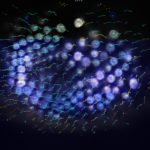Link to Pubmed [PMID] – 35999534
Link to DOI – 10.1186/s12915-022-01378-0
BMC Biol 2022 08; 20(1): 183
Efficient tools allowing the extraction of 2D surfaces from 3D-microscopy data are essential for studies aiming to decipher the complex cellular choreography through which epithelium morphogenesis takes place during development. Most existing methods allow for the extraction of a single and smooth manifold of sufficiently high signal intensity and contrast, and usually fail when the surface of interest has a rough topography or when its localization is hampered by other surrounding structures of higher contrast. Multiple surface segmentation entails laborious manual annotations of the various surfaces separately.As automating this task is critical in studies involving tissue-tissue or tissue-matrix interaction, we developed the Zellige software, which allows the extraction of a non-prescribed number of surfaces of varying inclination, contrast, and texture from a 3D image. The tool requires the adjustment of a small set of control parameters, for which we provide an intuitive interface implemented as a Fiji plugin.As a proof of principle of the versatility of Zellige, we demonstrate its performance and robustness on synthetic images and on four different types of biological samples, covering a wide range of biological contexts.





